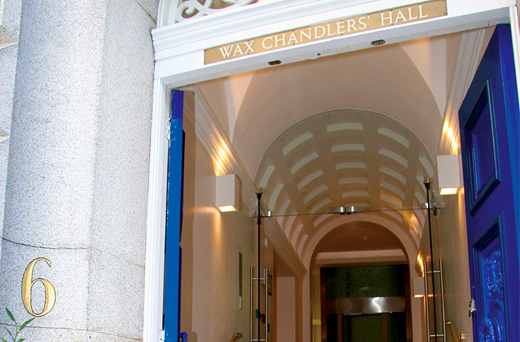The Wax Chandlers is twentieth in the order of precedence of the 110 Livery Companies of the City of London.
For hundreds of years the main purpose of Livery Companies was to:
- Regulate and uphold the standards of those who practiced their trade
- Take part in the life of the City of London
- To provide mutual help and support for their membership
- To encourage good fellowship and charitable giving
The origins of Livery Companies are ancient, having been established through the fusion of religious fraternities and ‘misteries’ (derived from the latin ‘misterium’ meaning ‘professional skill’) around about the fifteenth century. The early Livery Companies controlled the provision of services, manufacture, and selling of goods and food in the City of London and surrounding areas. The word ‘livery’ refers to the costume that members are entitled to wear; originally a gown and hood, or a hood on its own.
Religious fraternities had been numerous in town since Saxon times. They were made up of like-minded people and from the twelfth and thirteenth centuries some of these fraternities drew their membership from specific trades. Craftsmen and tradesmen had realised from at least the end of the thirteenth century, that such associations, relying on procedures which afforded them access to the church courts and protection under Canon Law, could secure for their members benefits which the civic authorities were unwilling to give. Essentially secret and private organisations, they have left little in the way of records. The Wax Chandlers’ own religious life appears to have been particularly linked to St Paul’s Cathedral.
The word ‘gild’ or ‘guild’ is often used to describe the companies and it derives from the Anglo-Saxon verb ‘gegildan’ meaning ‘to pay’. Members paid to belong to a group which would look after their welfare, both spiritual and material. Members received help in sickness and in many cases almshouses were established. During the sixteenth and seventeenth centuries medieval ideas of ‘hospitality’ expanded beyond a guild’s membership and major charitable foundations were established to support the needy in other areas of society. The Livery Companies, with their antiquity, commercial acumen and reputation for probity were thought to be eminently suited to be trustees of these foundations.
As the charitable activities of the companies increased, control over their trades and the economic and political advantages of membership were being eroded to become of little consequence by the 1850s. Although most of the older Livery Companies now have no links with their original trade, many have found new ways of contributing to the support of it. Thus the trade organisations were transformed into foundations primarily concerned with charity and public benefit.


